
Cenchrus is a widespread genus of plants in the grass family. Its species are native to many countries in Asia, Africa, Australia, the Americas, and various oceanic islands.

Ehrharta is a genus of plants in the grass family.
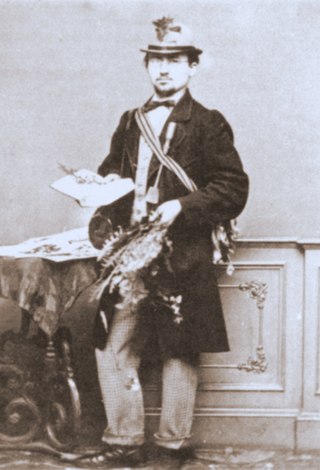
Carl Ernst Otto Kuntze was a German botanist.

Physocarpus, commonly called ninebark, is a genus of flowering plants in the family Rosaceae, native to North America and northeastern Asia.

Bothriochloa is a common and widespread genus of plants in the grass family native to many countries on all inhabited continents and many islands. They are often called beardgrass, bluegrass or bluestem.

Themeda is a genus of plants in the grass family native to Asia, Africa, Australia, and Papuasia. There are about 18 to 26 species, many of which are native to Southeast Asia.

Sesuvium portulacastrum is a sprawling perennial herb in the family Aizoaceae that grows in coastal and mangrove areas throughout much of the world. It grows in sandy clay, coastal limestone and sandstone, tidal flats and salt marshes, throughout much of the world. It is native to Africa, Asia, Australia, Hawai`i, North America and South America, and has naturalised in many places where it is not indigenous.
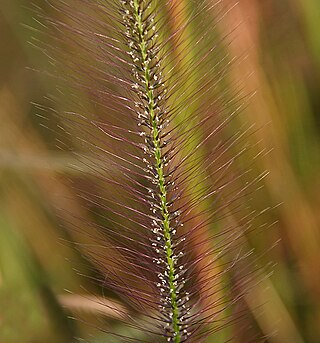
Perotis is a genus of Asian, African, and Australian plants in the grass family.
Pseudechinolaena is a genus of tropical and subtropical plants in the grass family, all but one species endemic to Madagascar.
Aniselytron is a genus of Asian plants in the grass family.
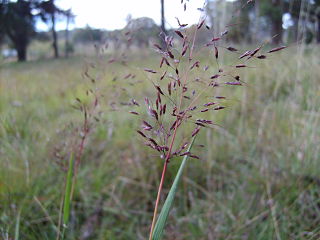
Capillipedium is a genus of plants in the grass family. They are native to Africa, Asia, Australia, and certain islands in the Western Pacific.
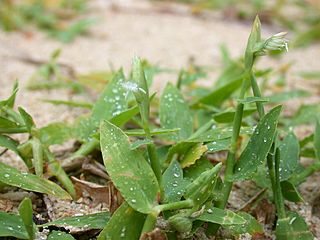
Thuarea is a genus of plants in the grass family, native to Asia, Africa, Australia, and various islands of the Indian and Pacific Oceans.
Dissochondrus, or false bristlegrass, is a genus of Hawaiian plants in the grass family. The only known species is Dissochondrus biflorus.
Ophiuros is a genus of Asia, Australian, and East African plants in the grass family.

Ottochloa is a genus of African, Asian, and Australian plants in the grass family.
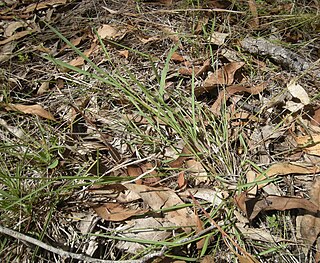
Paspalidium(watercrown grass) is a genus of tropical and subtropical plants in the grass family.
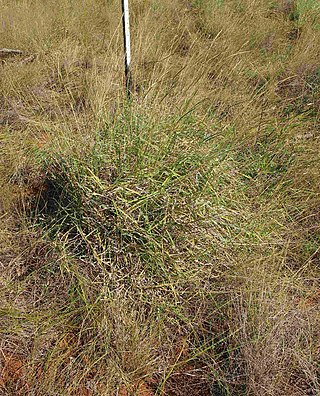
Mnesithea, or jointtail grass, is a genus of Asian, Australian, and Pacific Island plants in the grass family.
Microglossa is a genus of Asian and African flowering plants in the tribe Astereae within the family Asteraceae.
Hackelochloa granularis, the pitscale grass, is a species of grass native to sub-Saharan Africa and temperate and tropical regions of Asia. It is naturalised to the Southern United States, Mexico and South America.

Isopogon linearis is a small shrub in the family Proteaceae that is endemic to the southwest of Western Australia.














